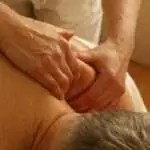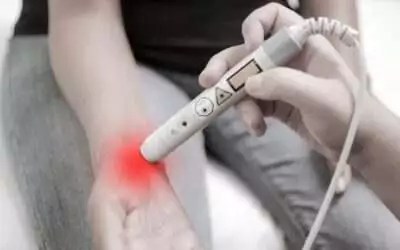Temporomandibular joint disorder (TMJ) is a medical condition that troubles the lower jaw joints and the related muscles. The TMJ is the joint that enables jaw-related movements (of which there are quite a few, by the way) and the muscles that carry out the movement. As a result, it is evident that the disorder will negatively affect the daily routine of an individual, e.g. eating, talking, yawning, and similar actions become extremely painful. Therefore, TMJ patients are on the lookout for numerous treatment options and home remedies, that can alleviate the symptoms of the disease and improve their quality of life, such as the use of a heating pad. We will discuss in detail the use and effects of a heating pad on TMJ in this article.
Does a Heating Pad Help TMJ: What Does Experts Say?
Many people wonder if using a heating pad can help alleviate the symptoms of TMJ. According to experts, the use of a heating pad can indeed provide relief for TMJ pain.
The application of heat can help relax the muscles around the jaw joint, reducing tension and promoting healing. Additionally, the heat can increase blood flow to the area, which can aid in reducing inflammation and swelling.
However, it is important to note that while a heating pad can be helpful in managing TMJ symptoms, it is not a cure-all solution. It is recommended to consult with a healthcare professional for a comprehensive treatment plan that may include other therapies in conjunction with the use of a heating pad.
Benefits of Applying a Heating Pad in TMJ.
Temporomandibular joint (TMJ) disorders can cause immense discomfort and pain in the jaw joint and surrounding muscles. One effective method to alleviate these symptoms is by applying a heating pad to the affected area. The benefits of using a heating pad in TMJ treatment are numerous and can greatly improve the overall well-being of individuals experiencing TMJ-related pain.
1. Pain Relief.
One of the most notable benefits of using a heating pad in TMJ treatment is the immediate pain relief it provides. Heat helps to relax the muscles, increase blood circulation, and reduce inflammation, thereby alleviating the discomfort associated with TMJ. The soothing warmth of the heating pad can significantly reduce pain intensity and provide much-needed relief to those suffering from TMJ symptoms.
2. Muscle Relaxation.
TMJ disorders often result in tense and tight muscles around the jaw joint. Applying a heating pad can effectively relax these muscles by increasing blood flow and promoting muscle flexibility. The heat from the pad helps to loosen the muscles, reducing muscle spasms and enhancing overall relaxation of the jaw area. This muscle relaxation can lead to improved jaw movement and reduced stiffness.
3. Improved Range of Motion.
TMJ disorders can lead to restricted jaw movement, making it difficult to talk, eat, or perform daily activities. By applying a heating pad, the muscles and joints in the jaw area become more pliable, allowing for increased range of motion. The increased flexibility enables individuals to regain their ability to open and close their mouths comfortably, facilitating better chewing, speaking, and overall jaw functionality.
4. Stress Reduction.
Stress is known to exacerbate TMJ symptoms and contribute to jaw tension and pain. Using a heating pad not only provides physical relief but also aids in reducing stress levels. The warmth generated by the heating pad helps relax not only the jaw muscles but also the mind, reducing anxiety and promoting relaxation. This stress reduction can have a positive impact on overall TMJ symptoms and contribute to a better quality of life.
5. Non-Invasive and Cost-Effective.
Applying a heating pad is a non-invasive and cost-effective method for managing TMJ pain. Unlike invasive procedures or medications, heating pads are readily accessible, affordable, and can be used at home. They offer a convenient alternative for individuals seeking relief from TMJ symptoms without resorting to more invasive or expensive treatment options.
| 💡 Tips FreakToFit.com The application of a heating pad in TMJ treatment offers a multitude of benefits. From providing immediate pain relief and muscle relaxation to improving range of motion and reducing stress, heating pads are a valuable tool in managing TMJ-related discomfort. Incorporating the use of heating pads into a comprehensive TMJ treatment plan can greatly enhance the overall well-being and comfort of individuals suffering from TMJ disorders. |
How to Apply Heating Pad in TMJ?
Here’s a step-by-step guide on how to effectively apply a heating pad in TMJ:
1. Choose the Right Heating Pad.
Look for a heating pad specifically designed for use on the face or jaw area. These pads are usually smaller in size, providing targeted heat therapy to the affected TMJ region.
2. Prepare the Heating Pad.
Before applying the heating pad, ensure it is clean and in good working condition. Check for any damage, frayed wires, or signs of wear and tear. If everything looks fine, plug in the pad and let it heat up to a comfortable temperature.
3. Cleanse the Area.
Prior to application, wash your hands thoroughly to maintain proper hygiene. Gently cleanse the area around your TMJ with a mild cleanser or warm water to remove any dirt or oil buildup. Pat the area dry with a clean towel.
4. Apply Moist Heat.
For enhanced effectiveness, dampen a clean washcloth with warm water and wring out any excess moisture. Place the damp cloth on top of the heating pad to introduce a soothing moist heat element to your TMJ therapy.
5. Position the Heating Pad.
Carefully position the heating pad on the affected TMJ area, ensuring it covers the jaw joint and surrounding muscles. It should be secured firmly but not too tight to allow proper circulation.
6. Adjust the Temperature and Time.
Most heating pads have adjustable temperature settings. Start with a low or medium setting and gradually increase it if needed. It’s recommended to use the heating pad for 15-20 minutes at a time, but always refer to the manufacturer’s instructions for specific guidelines.
7. Relax and Rest.
Once the heating pad is in place, find a comfortable position to relax and rest your jaw muscles. You can lie down or sit in a reclined position, whichever is most comfortable for you. Use this time to unwind, meditate, or listen to calming music to further alleviate tension.
8. Observe Safety Measures.
While using a heating pad, it’s important to prioritize safety. Avoid falling asleep with the heating pad on to prevent burns or overheating. Always follow the recommended usage guidelines and never place the pad directly on bare skin to prevent burns or discomfort.
9. Complement with Other Therapies.
Applying a heating pad is just one aspect of TMJ treatment. It’s advisable to combine heat therapy with other techniques such as jaw exercises, stretches, or relaxation techniques to maximize the benefits and promote healing.
10. Seek Professional Help if Needed.
If your TMJ symptoms persist or worsen despite using a heating pad and other self-care measures, it’s crucial to consult a healthcare professional. They can provide a comprehensive evaluation, diagnose the underlying cause of your TMJ disorder, and recommend appropriate treatments.
| 💡 Tips FreakToFit.com Remember, while a heating pad can provide temporary relief, it’s essential to address the root cause of TMJ disorder for long-term management and improved jaw health. |
Also Read: Ease Menopause With These Lower Body Fitness Activities
What is the best time to apply Heating Pad in TMJ?
The best time to apply a heating pad for TMJ (temporomandibular joint disorder) is typically when you are experiencing muscle tightness or pain in the jaw area.
Alternatives of Heating Pad in TMJ.
1. Warm towel.
Simply soak a towel in warm water and wring out the excess moisture. Place the warm towel on the affected area for relief.
2. Hot water bottle.
Fill a hot water bottle with hot (not boiling) water and place it on the jaw joint for soothing warmth.
3. Warm compress.
Dip a cloth in warm water, wring it out, and apply it to the TMJ joint.
4. Warm shower or bath.
Taking a warm shower or bath can provide overall relaxation and help alleviate TMJ discomfort.
5. Herbal heat packs.
Use herbal heat packs that can be warmed up in the microwave or oven. These packs often contain herbs with anti-inflammatory properties that can ease TMJ pain.
6. Electric blanket.
If the TMJ pain is more widespread, using an electric blanket can provide warmth and comfort to the entire body, including the jaw.
7. Warm herbal tea.
Sipping on warm herbal teas like chamomile or peppermint can help relax the muscles and provide temporary relief from TMJ pain.
8. Facial massage.
Gently massaging the muscles around the jaw joint can increase blood flow and reduce tension, providing relief from TMJ discomfort.
9. Acupuncture.
Trying acupuncture, a technique that involves inserting thin needles into specific points on the body, may help alleviate TMJ pain by stimulating the release of endorphins and promoting relaxation.
10. Physical therapy exercises.
In some cases, performing specific exercises recommended by a physical therapist can help improve jaw mobility and reduce TMJ pain without the need for a heating pad.
Bottom Line.
While there is limited research specifically addressing the effectiveness of heating pads in treating TMJ, the available evidence suggests that they can provide temporary relief from pain and discomfort associated with TMJ disorders. Heating pads can help relax the jaw muscles, increase blood flow, and reduce inflammation. However, it is important to note that heating pads should be used in conjunction with other treatments and therapies recommended by healthcare professionals for comprehensive management of TMJ. Individual experiences may vary, and it is advisable to consult a healthcare provider before incorporating heating pads into your TMJ treatment plan.









































 Workout
Workout

 Meditation
Meditation






 Podcast
Podcast
 E-book
E-book














